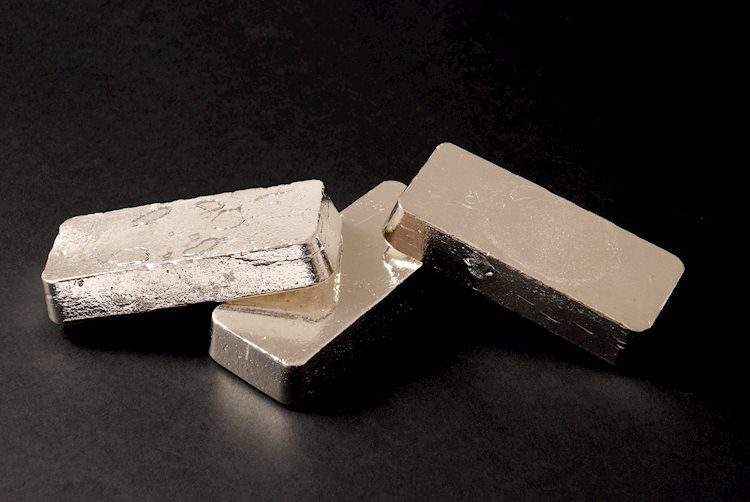- Silver drifts lower for the second straight day and seems vulnerable to decline further.
- A bearish multiple-tops pattern formation validates the near-term negative outlook.
- Bears now await a sustained break below $31.00 before positioning for further slide.
Silver (XAG/USD) extends its retracement slide from the vicinity of the $33.00 mark, or the highest level since December 2012 touched last week and remains under heavy selling pressure for the second straight day on Tuesday. The downward trajectory drags the white metal to a one-week low, around the $31.00 round figure during the first half of the European session.
From a technical perspective, the recent repeated failures to find acceptance above the $32.00 mark constitute the formation of a bearish multiple-tops pattern on the daily chart. That said, oscillators on the daily chart – though have been losing traction – are yet to confirm the negative bias. Hence, it will be prudent to wait for some follow-through selling below the $31.00 round figure before positioning for any further losses.
The XAG/USD might then accelerate the fall towards the $30.60-$30.55 horizontal support before eventually dropping to the $30.00 psychological mark en route to the $29.75-$29.55 confluence. The latter comprises the 100-day Simple Moving Average (SMA) and the 50-day SMA, which if broken should pave the way for a further decline towards the $29.00 mark and the next relevant support near the $28.60-$28.50 region.
On the flip side, the $31.55 area now seems to act as an immediate hurdle, above which the XAG/USD could climb to the $31.75-$31.80 intermediate resistance and the $32.00 mark. Some follow-through buying beyond the $32.25 supply zone might then allow bulls to make a fresh attempt to conquer the $33.00 round figure before climbing further towards the December 2012 swing high, around the $33.85 region.
Silver daily chart
Silver FAQs
Silver is a precious metal highly traded among investors. It has been historically used as a store of value and a medium of exchange. Although less popular than Gold, traders may turn to Silver to diversify their investment portfolio, for its intrinsic value or as a potential hedge during high-inflation periods. Investors can buy physical Silver, in coins or in bars, or trade it through vehicles such as Exchange Traded Funds, which track its price on international markets.
Silver prices can move due to a wide range of factors. Geopolitical instability or fears of a deep recession can make Silver price escalate due to its safe-haven status, although to a lesser extent than Gold’s. As a yieldless asset, Silver tends to rise with lower interest rates. Its moves also depend on how the US Dollar (USD) behaves as the asset is priced in dollars (XAG/USD). A strong Dollar tends to keep the price of Silver at bay, whereas a weaker Dollar is likely to propel prices up. Other factors such as investment demand, mining supply – Silver is much more abundant than Gold – and recycling rates can also affect prices.
Silver is widely used in industry, particularly in sectors such as electronics or solar energy, as it has one of the highest electric conductivity of all metals – more than Copper and Gold. A surge in demand can increase prices, while a decline tends to lower them. Dynamics in the US, Chinese and Indian economies can also contribute to price swings: for the US and particularly China, their big industrial sectors use Silver in various processes; in India, consumers’ demand for the precious metal for jewellery also plays a key role in setting prices.
Silver prices tend to follow Gold’s moves. When Gold prices rise, Silver typically follows suit, as their status as safe-haven assets is similar. The Gold/Silver ratio, which shows the number of ounces of Silver needed to equal the value of one ounce of Gold, may help to determine the relative valuation between both metals. Some investors may consider a high ratio as an indicator that Silver is undervalued, or Gold is overvalued. On the contrary, a low ratio might suggest that Gold is undervalued relative to Silver.
Read the full article here

